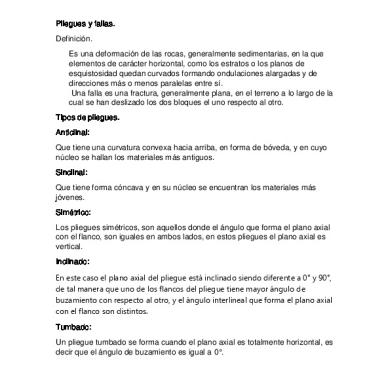Ts2el1_u2_la_langsum.pdf
This document was uploaded by user and they confirmed that they have the permission to share it. If you are author or own the copyright of this book, please report to us by using this DMCA report form. Report DMCA
Overview
Download & View Ts2el1_u2_la_langsum.pdf as PDF for free.
More details
- Words: 340
- Pages: 3
Touchstone 2nd Edition • Language summary • Level 1
Unit 2 • Lesson A: Classmates Vocabulary Location expressions at home / work at (the library / the gym) in class over there
Adjectives asleep late (for class) sick
(adj) (adj) (adj)
Other words again he she they
(adv) (pron) (pron) (pron)
be: is, are
(v)
Grammar The verb be: he, she, and they He, she and they are pronouns: •
Use he for a man or a boy.
•
Use she for a woman or a girl.
•
Use they for two or more people.
© Cambridge University Press 2014
Unit 2, Lesson A, Page 1
Touchstone 2nd Edition • Language summary • Level 1 The verb be has contractions and full forms: Contractions
Full forms
he's
he is
she's
she is
they're
they are
You can use one of these pronouns + be to make a statement about another person. He's at work. She's sick. They're late.
Affirmative statements Use a name or pronoun + a form of be: Hiroki's at work.
He's at work.
Ellen's sick.
She's sick.
Carmen and Suzanna are late.
They're late.
Negative statements Use a name or pronoun + a form of be + not: Hiroki's not here.
He's not here.
Ellen's not in class.
She's not in class.
Carmen and Suzanna are not here. They're not here.
© Cambridge University Press 2014
Unit 2, Lesson A, Page 2
Touchstone 2nd Edition • Language summary • Level 1 Yes-No questions and short answers Use be + a name or pronoun to ask Yes-No questions: Is Hiroki at work? Is she in class? Are they late?
Affirmative short answers Use Yes + pronoun + full form of be: A Is Hiroki at work? B Yes, he is. A Are they late? B Yes, they are.
Negative short answers Use No + pronoun + contraction of be + not: A Is Ellen sick? B No, she's not. A Are they here? B No, they're not.
© Cambridge University Press 2014
Unit 2, Lesson A, Page 3
Unit 2 • Lesson A: Classmates Vocabulary Location expressions at home / work at (the library / the gym) in class over there
Adjectives asleep late (for class) sick
(adj) (adj) (adj)
Other words again he she they
(adv) (pron) (pron) (pron)
be: is, are
(v)
Grammar The verb be: he, she, and they He, she and they are pronouns: •
Use he for a man or a boy.
•
Use she for a woman or a girl.
•
Use they for two or more people.
© Cambridge University Press 2014
Unit 2, Lesson A, Page 1
Touchstone 2nd Edition • Language summary • Level 1 The verb be has contractions and full forms: Contractions
Full forms
he's
he is
she's
she is
they're
they are
You can use one of these pronouns + be to make a statement about another person. He's at work. She's sick. They're late.
Affirmative statements Use a name or pronoun + a form of be: Hiroki's at work.
He's at work.
Ellen's sick.
She's sick.
Carmen and Suzanna are late.
They're late.
Negative statements Use a name or pronoun + a form of be + not: Hiroki's not here.
He's not here.
Ellen's not in class.
She's not in class.
Carmen and Suzanna are not here. They're not here.
© Cambridge University Press 2014
Unit 2, Lesson A, Page 2
Touchstone 2nd Edition • Language summary • Level 1 Yes-No questions and short answers Use be + a name or pronoun to ask Yes-No questions: Is Hiroki at work? Is she in class? Are they late?
Affirmative short answers Use Yes + pronoun + full form of be: A Is Hiroki at work? B Yes, he is. A Are they late? B Yes, they are.
Negative short answers Use No + pronoun + contraction of be + not: A Is Ellen sick? B No, she's not. A Are they here? B No, they're not.
© Cambridge University Press 2014
Unit 2, Lesson A, Page 3
More Documents from "Yoni VL"

Conclusiones De Perforacion.docx
December 2019 15
Ts2el1_u2_la_langsum.pdf
May 2020 14
Villanuevaa.docx
May 2020 6
2 Sap Hipertensi.docx
April 2020 7
